|
The engine room, or compartment in this case, is the heart of a vessel; the literal motive force that moves the vessel through the water and provides power for necessities like Air Conditioning and Satellite TV (at least my wife insists these items are necessities, if she’s going to join me on a Powell vacation). The Serenity was in desperate need of a heart transplant. The engines and generator had, of course, been completely submerged, but we had been told that they had been pickled after the vessel was refloated. However, there was no indication of how well they had been pickled and I got varying accounts from the guys at Dry Storage, the Insurance Company, and Executive Services. If your engine goes under, there are several differently levels of pickling that can occur, and they range from completely ineffective window dressing to an ideal pickling that ensures the engine is turn-key ready. Ideally, you would drain the oil, remove the water from the cylinders, fill it with oil, and fire it up to get the engine up to temperature; then you change the oil and fog the cylinders. That engine should be none the worse off. While they didn’t fire up the Serenity’s engines, it does seem like they did a decent job of pickling them, having at least fogged the cylinders, and the engines did turn freely. However, I discovered that they had over 2500-hours on them and would need a fair bit of work to get running again. While you can usually expect to get around 4000-hours out of these engines, I was a little worried about the reliability of these engines without knowing the service history and knowing the latter half of their life is likely more prone to mechanical failures. After going back and forth on whether to replace them or try to eke out their final 1500-hours, I finally decided to just bite the bullet and buy new engines. My logic was, if I was looking to sell shares after getting the boat finished, it would be a much easier sell with brand new engines. The Serenity was powered by twin 4-cylinder 3.0-L Mercruisers and I was able to purchase new GM Marine long blocks, along with new starts and alternators, from Michigan Motorz. I had Offshore Marina pull the old engines out and drop the new long blocks into place, replacing the power couplers and boots along the way, but finished the dressing of the engines myself. After a lot of fiddling by a bunch of part time mechanics (my dad, some friends, and me), we got both engines running smoothly…even if we did have to change the carburetors a couple times. I’d decided to rebuild the carburetors, and let’s say I might have needed a little more practice (which I got) to hone my carb rebuilding skills. I had contemplated going with EFI engines, but Michigan Motorz didn’t recommend it as they thought the carbureted engines were less prone to issues, easier to work on if there was a problem, and fuel savings would be minimal in the 3.0-L engines. Some would think that with only 3.0-L engines the Serenity would be underpowered, but on a boat this size I see very little benefit in adding a ton of horsepower; you’re only going to burn fuel faster. Let’s face it, you’re in a houseboat, you’re not going anywhere fast. The mono-hull aluminum boats, as full displacement hulls, are more restricted by their hull speed than by any lack of horsepower. Calculating the hull speed for the Serenity, I come up with 9-knots, going faster than that comes at a very high cost (e.g. doubling your RPMs might only gain you a knot or two of speed, but comes at a tremendous loss of fuel efficiency). These little 4-cylinders will cruise at 2400-rpm, moving the boat along at a reasonable 8.5-knots. With the current props, increasing the throttle to full open gets you up to about 3200-rpm and ekes out an addition 1.5-knots. With big V8s I’d guess that you could plow enough water to get up to maybe 12-knots, but doubt you’d ever do much better, and cruising at the same 8.5-knots would be less economical than with the 4-cylinders. I left the 17-pith propellers on the boat, but they seem to be too much prop for the engines. The pitch of propellers is expressed as the distance the propeller would travel through a solid (i.e. with no slippage) in one revolution. Correctly sizing the propellers to your engine is important to ensure that you get peak performance. An over propped engine, as we seem to have in this case, will bog the engine down and, among other issues, will reduce your fuel efficiency. If the engine is under propped, you will be able to rev the engine beyond redline and, as a result, you will lose top speed throttling back. You can either change pitch or diameter to fine tune the performance of your engine, but ideally you’d be able to get max RPM at wide open throttle. I will be reducing them to 13-pitch, which were stored in the hull and were likely the original props from the builder, when I pull the boat out of the water this winter and hopefully this will get maximum RPMs up to closer to redline. Having new main engines isn’t much good unless you can control them. Luckily, the relatively simple hydraulic steering system seemed to suffer no ill effects; after refilling it, both the upper and lower helm responded to commands. Unluckily, what I anachronistically refer to as the EOT, or engine order telegraph, was not salvageable. After discovering the cost of replacing the electronic throttle and shift controls, I briefly considered a return to an EOT and making someone just sit in the engine compartment and manually operate the throttles and shift linkages when I yelled at them, but couldn’t figure out how to sell that as a feature. The Serenity was originally outfitted with Mathers MicroCommander 585 electronic controls, but at some point the starboard control box had failed and been upgraded to a 91100. I was hopeful that I might be able to salvage the controls, but when I cracked open the control boxes I found that they were still completely full of water after almost 6-months. The boxes were designed to be water tight, but at 10-ft or more down the water pressure was too great and they suffered water intrusion. Once they were out of the water though, the pressure was much lower and their waterproofing proved effective at retaining that water. Both control heads (the levers that you operate at the helms) were still operational and I only needed to replace the control boxes. I say only, but I suffered sticker shock when I started looking for replacements. Mathers was purchased many years ago by an Italian company, ZF Marine, but they still produced the 9000 Series MicroCommanders, which are backwards compatible to the old 585 systems. That meant that I could install the new control boxes and would be able to reuse the existing wiring and control heads, with a few minor modifications. Installation actually went very smoothly, I just had to consult the 300-page manual (alright, it was only 259-pages) to rewire the control heads and then calibrate the controls. They worked perfectly…except we couldn’t get the engines to start. ZF Marine’s support was great and they walked me through a lot of trouble shooting. Eventually, I tracked the issue down to the new ignition switches that I bought on Amazon. I had replaced all the instruments and switches on the lower helm, since they had been underwater, but apparently Amazon wasn’t a great source for starter switches. I’m not sure what these switches were intended for, but they definitely wouldn’t work as standard starter switches. They would cut power to the terminal powering the instruments and the MicroCommanders when you went to the start position, which triggered the MicroCommanders’ ignition cut off switch and prevented the engines from starting. Replacing the starters solved the issue and the engines fired right up. With the main engines sorted out, I could turn my attention to the generator. The pickling of the generator was more halfhearted than the main engines, but the engine did turn freely. That being said, the actual generator portion was likely shot and the only solution was a replacement. I was able to source a rebuilt 12.5-kW Westerbeke Generator for about three quarters of what a new unit would have run (in case you haven’t shopped for one, generators are expensive) and got it delivered to Offshore. Since it was a direct swap, we were able to get it installed, with the help of Offshore’s forklift, in just a couple hours and it runs like a kitten…or is that purrs like a race horse? Either way, it starts right up and is surprisingly quiet. In choosing a generator, if relatively quiet performance is a factor (When isn’t it?) you want to look at gensets that operate at a lower RPM. Most Westerbekes, for example, operate at 1800-rpm, but they do offer gensets that operate at 3600-rpm, which is the same at most Kohler gas gensets. I’ve not had much experience with one brand of genset over another, but regardless of brand, lower RPMs will yield a much quieter operation. The final major project in the engine compartment had been to address the fuel tanks, which of course now contained a cocktail of gasoline and water that engines don’t particularly like. I purchase a 300-gallon tank and borrowed a 12-V fuel pump from my uncle, who was unable to pump his diesel for a few days, and headed down to suck out the contaminated fuel. Transferring fuel is a dangerous operation, as was illustrated by the recent fire that destroyed three houseboats in the Offshore storage lot. Fueling our cars at the gas station can make us complacent, but gasoline is far more dangerous than most people realize; proper precautions should always be taken when you are transferring fuel. Firstly, always use approved fuel transfer pumps, in our case a borrowed Fil-rite Fuel pump that would run with the trailer wiring harness on the truck. Secondly, we made sure that all power and other potential ignition sources were secured and remained so throughout the operation. Thirdly, we had a larger fire extinguisher at the ready, should there be an issue. We pumped both tanks dry and then cycled through a few gallons of ethanol, which acts much like dry gas and will bond with water. Pumping the tanks dry again, we then filled them with 75-gallons each from two of the auxiliary tanks that we removed from the upper deck. The auxiliary tanks had never been submerged and we found no signs of water in that fuel. We added stabilizer and a few gallons of ethanol to get any remaining water into suspension and allow it to be burned in the engines. Even with 75-gallons added to each tanks, I ended up spending $450 in filling the main tanks to capacity. The bilge pumps were the Achilles heel of Serenity once before and I definitely didn’t want a repeat performance. The old bilge pumps were both Atwood Sahara 750-gph (gallons per minute) bilge pumps, which I thought were rather small, with integrated float switches. Neither was firmly installed in the bilge, but were just left loosely sitting in the bottom of the bilge, which would have likely prevented the float switches from operating correctly. Also, neither was wired correctly and would not have been operational in any respect at the time of sinking. The mid-compartment bilge pump was wired through the switch on the breaker panel, which supplied power to both the float switch and the manual override. That switch had to be off to keep the pump from running continuously, and thus the float switch would not have actuated during the sinking. The engine compartment bilge pump had the float switch power wired through the manual override switch on the aft control panel, thus only being powered when the switch was turned on. The manual override power wire was connected directly to ground via a hull fitting. This meant that the manual override switch did not operate the pump and that, if the switch were in the off position, as it likely was, the float switch would not have operated. Even if the float switch did operate, it would have shorted to ground through the incorrectly connected manual override power switch. In short, none of the vessel's float switches were operating at the time of the sinking. The Serenity’s hull is divided into three watertight compartments; the forepeak, a main compartment, and the engine compartment. The engine compartment and the main compartment both have a bilge pump for flooding protection, but the majority of the forepeak is above the water line and thus does not have any flooding protection. The majority of sinking incidents actually results from water intrusion from above deck. Whether the bilge pump malfunctions, or a heavy storm hits, boats take on more water than they can handle and submerge, as was the case when Serenity went down. The only way to combat this form of sinking is to conduct preventative maintenance and ensure that your bilge pumps are up to the task. I wanted to make sure that the pumps were capable of keeping up with major water intrusion, so I purchased the largest bilge pumps I could source, 3700-gph SeaFlo pumps (just five times larger than the ones they replaced). I went with external float switches, which I prefer to the integrated switches, as they allows you to easily test the operation of the float switch and visually inspect it. Both pumps are wired with override switches, so that you can manually engage them. The float switches are powered directly from engine room batteries with inline fuses. Those batteries are maintained by a trickle charger; this set up ensures that when the boat is left unattended in the slip, the bilge pumps should never lose power. This is the most robust bilge pump system that I could devise and should provide protection from all but worst case scenarios. Sinking is a scary proposition, but the number one fear of most seafarers is fire. I was happy to see that the engine compartment was protected by a HALON system, which was in fine shape and only needed inspection/re-certification. The system is a HALON 1301 Flooding System that is automatically actuated when temperatures in the Engine Compartment reach 175-deg F. While HALON production ceased in 1994 due to EPA regulations on CFCs, it is one of the safest firefighting agents that you could employ in confined spaces. HALON is a firefighting agent that attacks the fire by inhibiting the chemical reaction itself and is incredibly effective at almost instantly knocking down a fire, even in low concentrations.
With the safety features in place, the engine room was finally finished and we could move on to some of the creatures comforts (like interior finishes, electrical systems, and indoor plumbing). Until next time, here’s wishing you fair winds and following seas.
3 Comments
|
AuthorBrent Pounds has over a decade of experience in the maritime industry and has been involved in recreations boating since he was a child. See the About section for more detailed information. Archives
October 2016
Categories
All
|
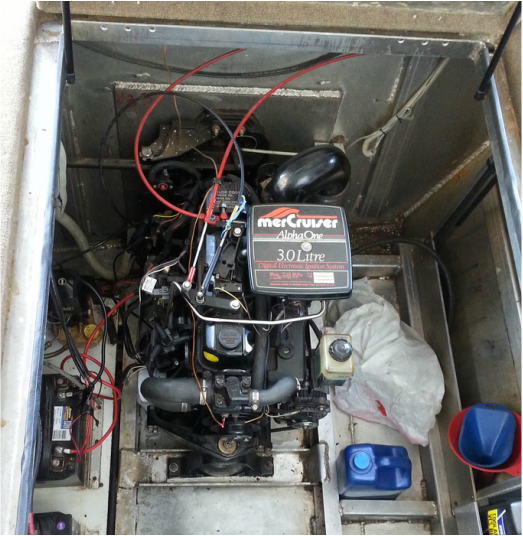
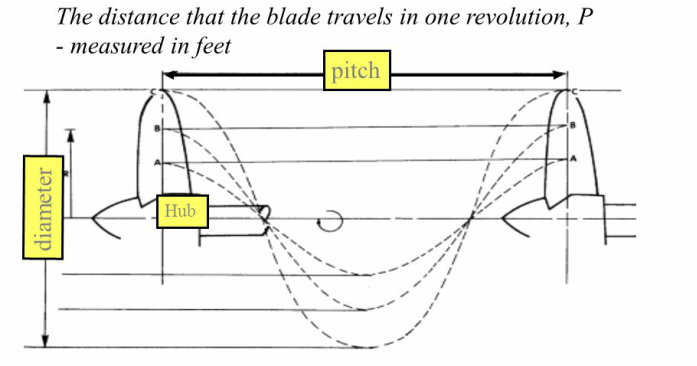
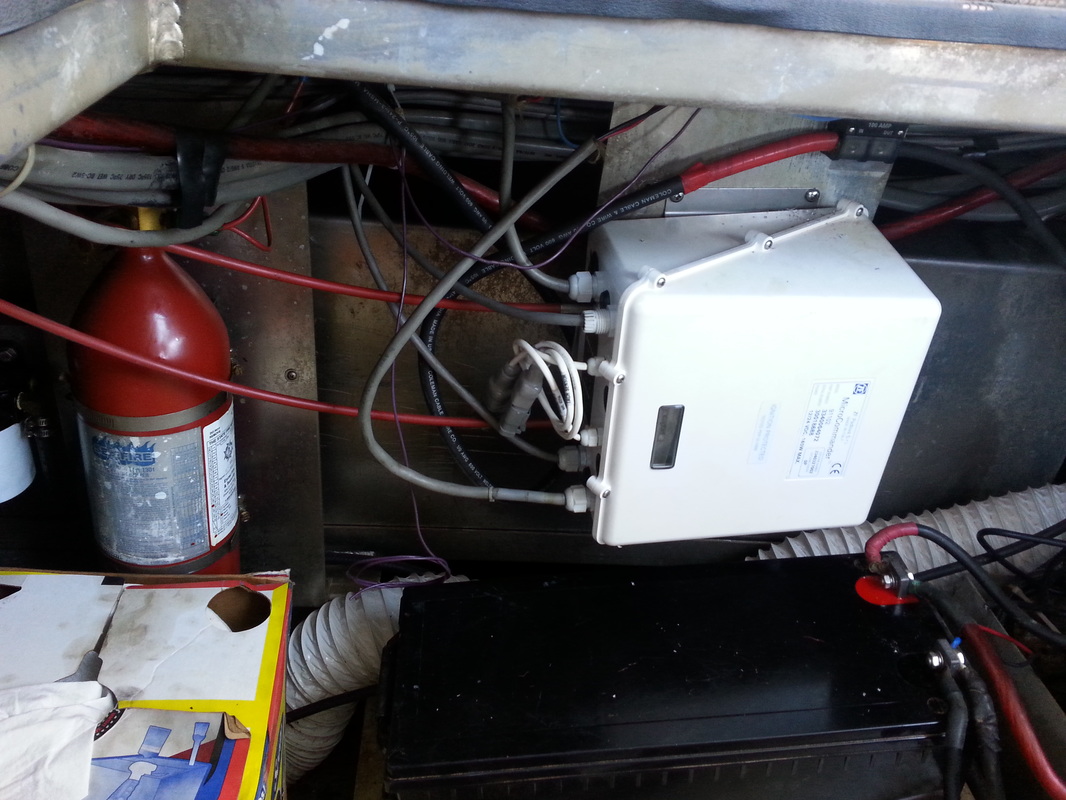
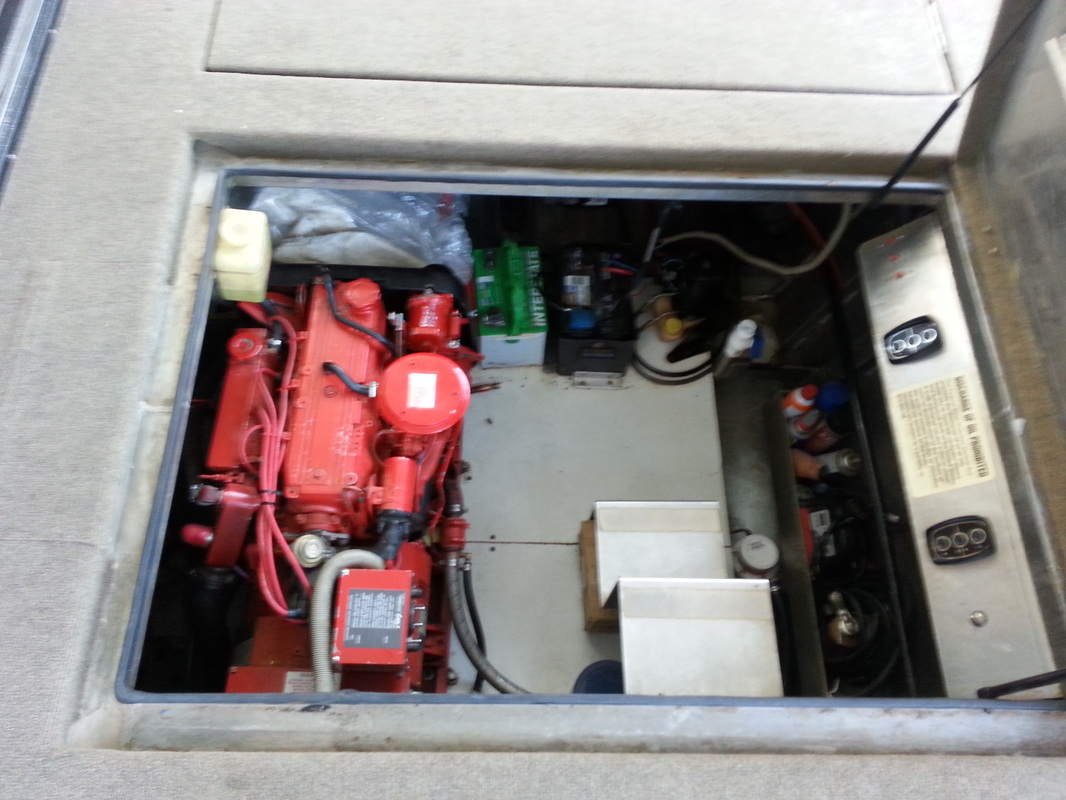
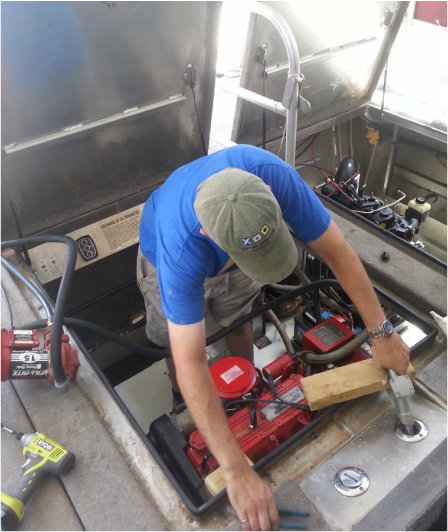
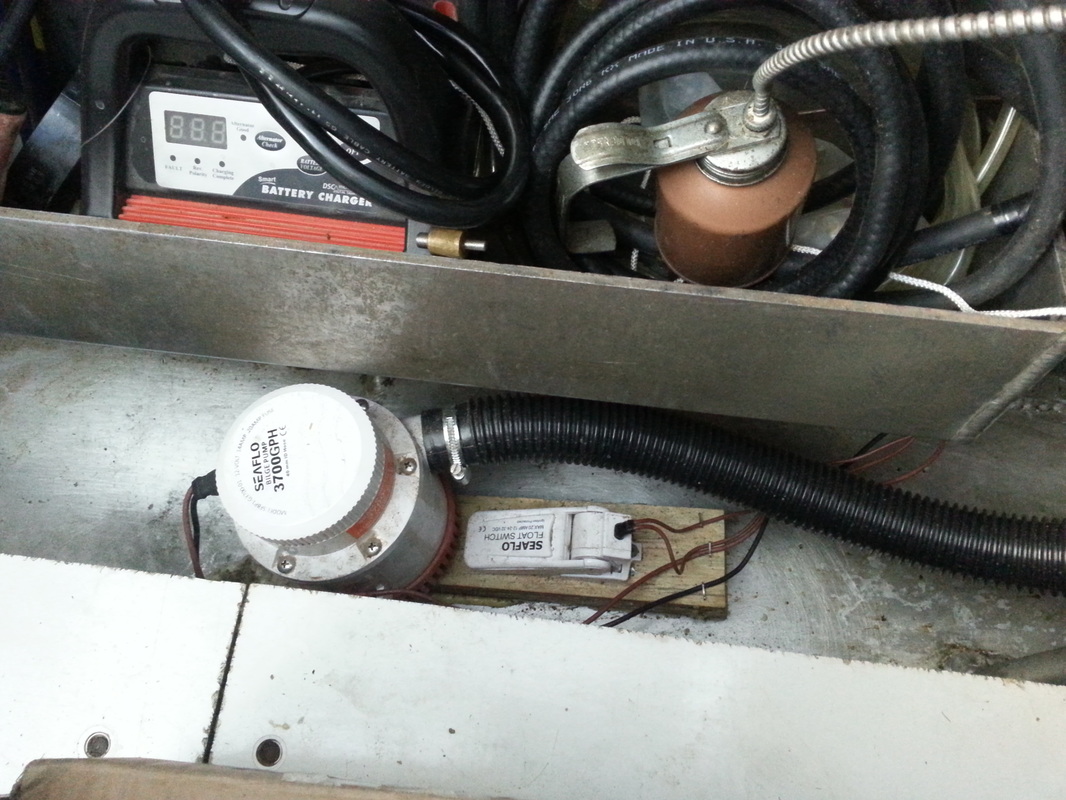
 RSS Feed
RSS Feed